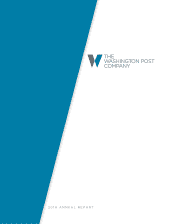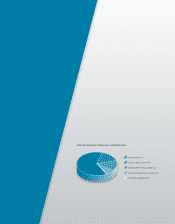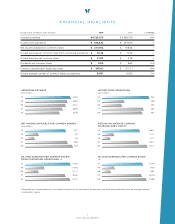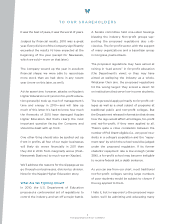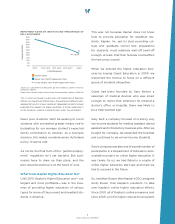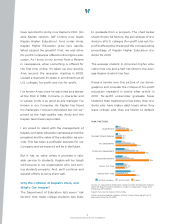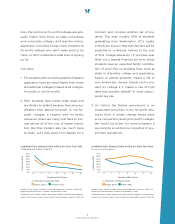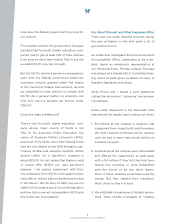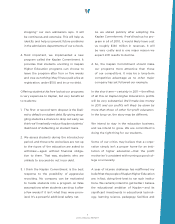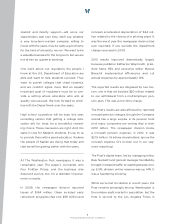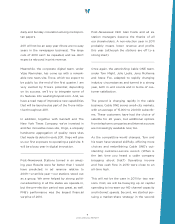Washington Post 2010 Annual Report Download - page 6
Download and view the complete annual report
Please find page 6 of the 2010 Washington Post annual report below. You can navigate through the pages in the report by either clicking on the pages listed below, or by using the keyword search tool below to find specific information within the annual report.
4
THE WASHINGTON POST COMPANY
have reported to Andy, now Kaplan’s CEO. (An
able Kaplan veteran, Je Conlon, now heads
Kaplan Higher Education.) And, under Andy,
Kaplan Higher Education grew very rapidly.
What caused the growth? First, we and other
for-profit companies oered online higher edu-
cation. As I know to my sorrow from a lifetime
in newspapers, when something is oered for
the first time online, it’s taken up very quickly.
And, second: the recession, starting in 2008,
caused a dramatic increase in enrollments at all
U.S. colleges, for-profit and not-for-profit.
I’ve known Andy since he was hired as a lawyer
at the Post in 1986. In brains, in character and
in values, Andy is as good as any manager I’ve
known in our Company. As Kaplan has faced
its challenges, I’ve been impressed but not sur-
prised at the high-quality way Andy and the
Kaplan team have responded.
I am proud to stand with the management of
Kaplan, our higher education campuses and online
programs and the value of the education we pro-
vide. This has been a profitable business for our
Company, and we expect it will be in the future.
But it has no value unless it provides a valu-
able service to students. Kaplan will be tough
with anyone in our organization who isn’t serv-
ing students properly. And, we’ll continue and
expand eorts to serve them well.
Why the Criticism of Kaplan’s Work, and
What’s Our Answer?
The Department of Education lists seven “risk
factors” that make college students less likely
to graduate from a program. The chart below
shows those risk factors, the percentage of stu-
dents in all U.S. colleges (for-profit and not-for-
profit) aected by these and the corresponding
percentage of Kaplan Higher Education stu-
dents for 2010.
The average student in American higher edu-
cation has one and a half risk factors; the aver-
age Kaplan student has four.
Pause a minute over this picture of our demo-
graphics and consider the critique of for-profit
education repeated in article after article in
2010: for-profit universities graduate fewer
students than traditional universities; their stu-
dents also have higher debt loads when they
leave college; and, they are likelier to default.
RISK FACTORS
Attends Part Time
Works Full Time
Delayed Enrollment
Financially Independent
Has Dependents
No High School Diploma
Single Parent
Source: U.S. Department of Education, National Center for Education Statistics,
2003–04 Beginning Postsecondary Students Longitudinal Study, First
Follow-Up (BPS:04/06).
Kaplan Data Source: Kaplan internal data.
Kaplan ceased accepting students without a high school diploma or its
equivalent eective fall 2009.
All Postsecondary All For-Profit Kaplan
8%
28%
39%
7%
18%
17%
43%
60%
26%
56%
83%
20%
40%
95%
23%
32%
26%
43%
25%
57%
18%

